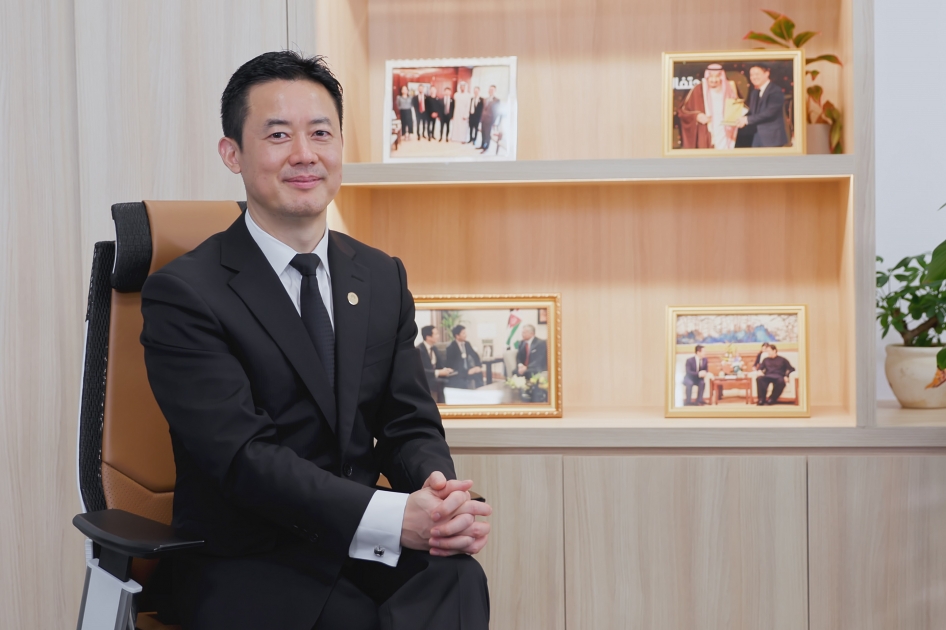
Experts say expanding 5G will boost Saudi Arabia and regional economies during COVID-19 recovery
Telecommunications leaders and experts from Saudi Arabia and across the world recently gathered at the SAMENA Telecommunication Council Leaders’ Summit to review plans for unleashing the potential of 5G networks to boost economies and societies in a post COVID-19 environment. Held virtually for the first time due to social-distancing requirements, the Summit was hosted by Huawei for the seventh consecutive year.
This year, the SAMENA Telecommunications Council Leaders’ Summit welcomed H.M. Queen Silvia of Sweden, Founder of World Childhood Foundation; H.E. Houlin Zhao, Secretary General of the ITU; Mats Granryd, Director General GSMA; Isabelle Mauro,
Head of Telecommunications at the World Economic Forum in the USA; Mark Spelman, Head of Thought Leadership at the World Economic Forum in Switzerland; Dr. Boutheina Guermazi, Director - Digital Development at The World Bank Group in the USA; Dr. Sanguchul Lee, Chief Advisor of LG Uplus and LG Group; and Mr. Kamarul A. Muhamed, Founder & Group CEO of Aerodyne Group. Summit attendees also included senior executives from telecommunications service providers, local regulatory authorities, global NGOs, and other ICT industry professionals representing decision makers for different verticals and government entities in countries from across South Asia, the Middle East, North Africa, Asia, Europe, and beyond.
The Summit was held under the theme “5G-X: Harnessing 5G Across Industries for Investment Revival” and highlighted how technology and ICT infrastructure play a significant role in our societies and economies. The COVID-19 pandemic demonstrated the need to strengthen digital infrastructure to better prepare societies for future crises and to make systems more resilient and sustainable, guaranteeing a better and more effective outcome. A shift to cloud, IoT, and better integration of AI into the public health response was also spotlighted, in addition to harnessing of other technologies for smart service delivery, which should be a key priority moving forward.
SAMENA Telecommunications Council Leaders’ Summit stressed on topics which are more societal in nature than business-focused, but are essential to industry dialogue. Attending speakers shed light on the impacts of collaborative efforts when deploying technology in the Middle East region to overcome digital transformation challenges. The Summit also explored how ICT stakeholders can work together with industry verticals to turn their vision into reality at the local and regional level.
Summit highlights included a dedicated Huawei 5G Ecosystem Conference held for the third consecutive year under the theme “Unleash 5G potential, build a better world”. Participants reviewed 5G ecosystem cooperation in the Middle East, and how 5G paired with complementary technologies such as cloud, AI, and AI-driven autonomous and BVLOS commercial drone applications, can inspire new vertical industry applications. Today that ranges from improving SME competitiveness to the digitization of oil & gas operations in the Middle East and globally, all of which boost economic potential by enhancing industrial processes and productivity. The conference was led by You Qianwen, VP of Huawei Middle East, and Wang Su, VP of Carrier Network Business Group Marketing at Huawei Middle East. The conference was attended by industry experts including Ahmed Al Sharif, General Manager – Network at STC Kuwait, Cesar Andres Lopez, CEO of Datumcom, and Kamarul A Muhamed, Founder and Group CEO of Aerodyne Group.
With more economies becoming digital today, the Summit also explored business resilience strategies in a hyper-connected world. Andy Purdy, Chief Security Officer for Huawei USA, was one of the experts leading the discussion on what regulatory frameworks will be needed to help vertical industries as well as governments to leverage cloud environments for future efficiency.
Ryan Ding, Executive Director of the Board and President of Carrier Network Business Group at Huawei, noted: “Despite the unprecedented challenges we are facing, governments, regulators, and operators across the globe have spared no effort to maintain social stability, protecting peoples’ livelihoods and helping the entire society fight against COVID-19. The applications of 5G will speed up enterprise digitalization in the Middle East and greatly stimulate the economy. The Middle East in particular is already expected to become a reference in 5G commercialization around the world, and together, we have ensured the normal utilization of network services during the pandemic. Looking ahead, Huawei has the responsibility and confidence to work with operators, partners, and vertical industries to achieve 5G business success—promoting the development of the 5G ecosystem to help enterprises to improve their competitiveness.”
Charles Yang, President of Huawei Middle East delivered the opening keynote of the summit commenting: “Although the pandemic has brought uncertainty to our lives, the advantages of 5G infrastructure are increasingly clear. The outbreak has led to increased demand for ICT solutions specifically in areas like 5G amid a boost in network usage and 5G 2B innovations. Meeting that demand will require new forms of public-private partnerships based on open collaboration, supporting strong industry policies that will enable social value, economic development, and provide enhanced service experiences to consumers across the region.”
Anjian, President of Carrier Networks Business Group at Huawei Middle East, added: “The ICT industry is the foundation and cornerstone of socio-economic restoration today. Quite simply, 5G brings agility, productivity, security, and intelligence to all industries. Moving forward, stakeholders should work on five different aspects to realize 5G momentum for consumers, enterprises, and governments. This includes a focus on technology innovation, ecosystem amplification, standards unification, business exploration, and growth-oriented collaborative policy. In the post-pandemic era, multi-level collaboration will be the only way to navigate through tough times.”


























